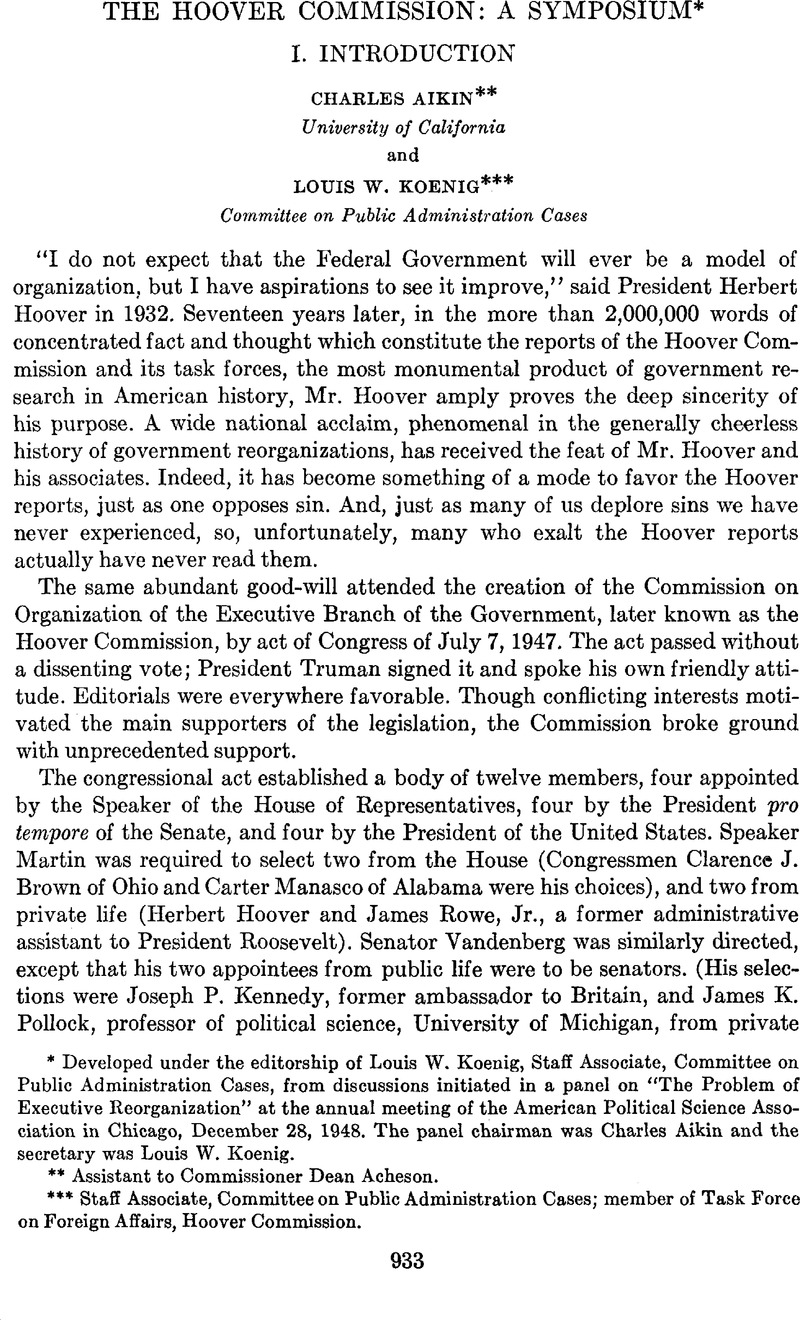No CrossRef data available.
Article contents
III. The Presidency
Published online by Cambridge University Press: 02 September 2013
Abstract

- Type
- The Hoover Commission: A Symposium
- Information
- Copyright
- Copyright © American Political Science Association 1949
References
1 Note, for example, the discussion of the treatment of some of these questions by the Interparliamentary Union at its Congress at Madrid in 1933 by ProfessorMirkine-Guetzévitch, B., in the section on “Recent Developments in Laws, Constitutions, and Administration”, Political Quarterly, Vol. 5, No. 1 (Jan.–Mar., 1934), pp. 111–122CrossRefGoogle Scholar, under the suggestive title of “The Technique of Liberty.”
2 New York, Columbia University Press, 1947. See especially pp. 158–174. Byrd's, Senator criticism of the Council, reported in the New York Times of July 18, 1949Google Scholar, illustrates the point made concerning a board in such a staff position by the Hoover Commission quoted earlier.
3 It will be recalled that the origins of the National Resources Planning Board were, via the National Resources Committee, in the unit established in the Public Works Administration assigned to review proposals for physical development under provisions of the National Industrial Recovery Act whereby employment might be revived, and hence reflected city planning experience, including a “part-time” or “citizen member” top board with paid staff. See Walker, Robert A., The Planning Function in Urban Government (Chicago, University of Chicago Press, 1941)Google Scholar, of which a revision is to be published shortly. In his concluding summary, Walker states that “the independent, unpaid citizen planning commission is not satisfactorily executing the planning function at the present time,” and that “planning is one of the staff functions and should be attached to the executive office” (pp. 333, 334). The Hoover Commission view would seem to derive more from the Taylor scientific management line of development of staff organization and process, and to follow the Walker diagnosis of desirable change in urban executive staff organization also. We have not had the last of this debate—as the views of Rexford Tugwell on the nature and organization of planning assure.
4 See, for example, the helpful collection of documents, with comment, by Marx, Fritz Morstein entitled The President and His Staff Services (Chicago, Public Administration Service, 1947)Google Scholar. H. M. Somers has a forthcoming study of the Office of War Mobilization in which important aspects of the presidency are explored.
5 Note the discussion of “Administrative Power” by Appleby, Paul in his Policy and Administration (University of Alabama Press, University, Alabama, 1949)Google Scholar, especially of the powers of the President, at pp. 111–120. He stresses the pervasive influences that modify the exercise of power by an official in the United States and in fact in all human organizations.





Comments
No Comments have been published for this article.